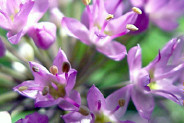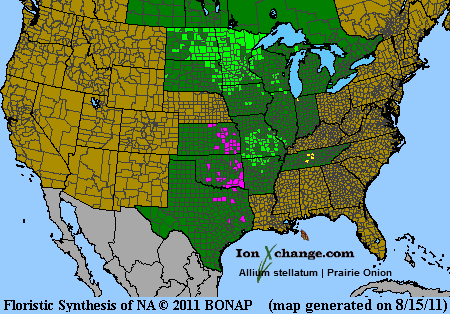 Loading... Please wait...
Loading... Please wait...- Home
- SEEDS
- SEED MIXES
- BUY PLANTS
- Info Request
-
Educational Videos
- Greenhouse Transplanting Demonstration
- Native Seed Cleaning demonstration at Ion Exchange Native Seed and Plant Nursery
- Attracting Butterflies
- Bidens - Bidens cernua Harvest Video
- Big Blue Stem Harvest
- Butterfly Milkweed Video
- Button Blazingstar - Liatris aspera Video
- Buttonbush - Cephalanthus occidentalis Video
- Canada Anemone - Anemone canadensis Harvest Video
- Cardinal Flower - Lobelia cardinalis Video
- Control Burn - Wildflower Field
- Cream Gentian - Gentiana flavida
- Culver's Root - Veronicastrum virginicum Video
- Cup Plant - Silphium perfoliatum Video
- Dormant Seeding | Planting
- Earthyman's Favorite Wildflowers Video
- Eco-Friendly Golf Course Seed Mix
- Floating Islands
- Fringed Loosestrife - Lysimachia ciliata Video
- Giant Yellow Hyssop - Agastache nepetoides Video
- Indiangrass - Sorghastrum nutans Video
- Iowa Prairie Partner Program
- Leadplant - Amorpha canescens (Potted) Video
- Meadow Blazingstar - Liatris ligulistylis
- Midland Shooting Stars - Dodecatheon meadii Video
- Native Plant Nursery Field Irrigation Experiment
- Nodding Onion - Allium cernuum Video
- Ohio spiderwort - Tradescantia ohiensis Video
- Old Man's Beard - Clematis virginiana blooms Video
- Oxeye Sunflower - Heliopsis helianthoides Video
- Prairie Spiderwort - Tradescantia bracteata
- Purple Coneflower - Echinacea purpurea Video
- Rain Garden or Water Garden Video
- Rattlesnake Master - Eryngium yuccifolium Video
- Riverbank Stabilization - Wetland Plants
- Rose Mallow - Hibiscus militaris Video
- Rosinweed - Silphium integrifolium Video
- Royal Catchfly - Silene regia
- Showy Tick Trefoil - Desmodium canadense Video
- Sneezeweed - Helenium autumnale Video
- Swamp Betony - Pedicularis lanceolata Video
- Swamp Milkweed - Asclepias incarnata Video
- Sweet Blackeyed Susan - Rudbeckia subtomentosa Video
- Tall Coreopsis - Coreopsis tripteris Video
- Urban Butterfly Garden
- Wild Bergamot - Monarda fistulosa Video
- Wild Geranium - Geranium maculatum Harvest
- Wild Goldenglow - Rudbeckia lanciniata Video
- Wild Petunia - Ruellia humilis Harvest Video
- Woodland Knotweed - Polygonum virginianum Video
- Yellow Coneflower - Ratibida pinnata Video
- Blog
- Resources
- Policies
Contact Us
Phone:
563-419-0837
or 563-535-7231
Email:
hbright@ionXchange.com
Browse Products
Add to Wish List
You Recently Viewed...
Our Newsletter
Product Description
Prairie Onion (Allium Stellatum) is a perennial wildflower growing 1 to 2 feet; pink to purple flowers at the top of an arching stem and blooming from July through August. Likes rocky woodland soils from New York to Georgia, west to Texas; west from Minnesota and Michigan to British Columbia. Also known as Autumn Onion, Wild Onion and Cliff Onion. Edible. Deer Resistant.
"Prairie Onion" - Liliaceae Family
Allium is the ancient Latin name for garlic.
| Sun Exposure | Savanna, Prairie |
| Soil Moisture | Mesic, Dry Mesic, Dry |
| Bloom Time | Summer July, August |
| Bloom Color | Pink, Purple, Lavender |
| Max. Height | 2 Feet |
| Wetland Code | UPL |
| Germ Code | C(60) |
| Seeds Per Packet | 300 |
| Seeds Per Ounce | 11,000 |
Native American tribes (especially the Cherokee) used the bulbs of the Prairie Onion as a treatment for croup, colic, colds and fevers. Following a dose of Horsemint tea, the juice of the Prairie Onion was taken for kidney stones and dropsy. Poultices of this species were often applied as a treatment for respiratory disorders by early settlers. Most of the medicinal effects of the Prairie Onion are similar to, but not as strong as its cousin, Wild Garlic.
Edible Uses:
Bulb: Raw or cooked. The bulbs are eaten by the N. American Indians. They are rather small, about 4cm tall and 15mm wide.
Leaves: Raw or cooked.
Flowers: Raw - Used as a garnish on salads.
Medicinal Uses:
A sweetened decoction of the root has been taken, mainly by children, as a remedy for colds. Although no other specific mention of medicinal uses has been seen for this species, members of this genus are in general very healthy additions to the diet. They contain sulphur compounds (which give them their onion flavour) and when added to the diet on a regular basis they help reduce blood cholesterol levels, act as a tonic to the digestive system and also tonify the circulatory system.
Other Uses:
The juice of the plant is used as a moth repellent. The whole plant is said to repel insects and moles.













